In this post, we will review two methods to close not responding apps in Windows 11. One of the methods will allow you to close frozen apps all and once.
Advertisеment
When some of your running apps freeze and stopped responding, there is no need to restart Windows or turn off or even unplug the PC. If you can manage other apps, open the start menu, etc, then you can simply kill the frozen one.
For that purpose, you can use the built-in Task Manager app.
Close a Not Responding App in Windows 11
- Open the Task Manager by pressing the Ctrl + Shift + Esc shortcut keys.
- Look for app that isn't responding on either Processes or Details tab. It will have "Not responding" in the "Status" column.
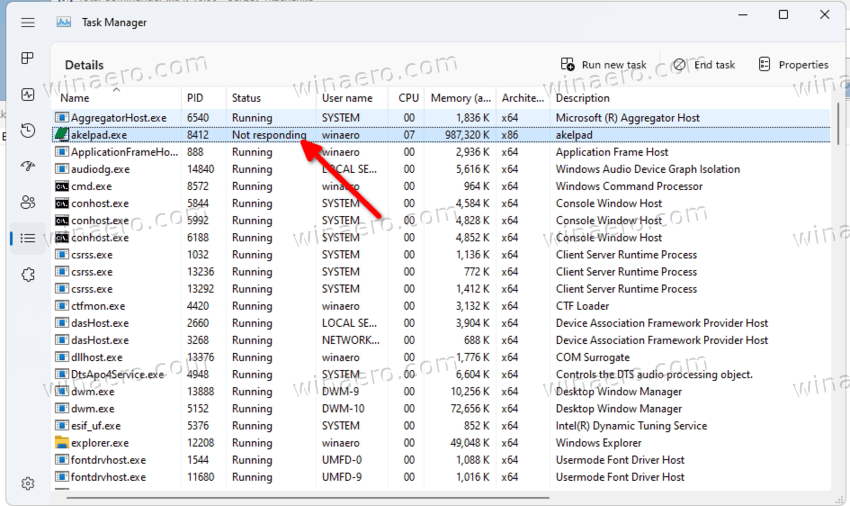
- Select it and hit Delete. Or right-click it and select End task from the context menu.
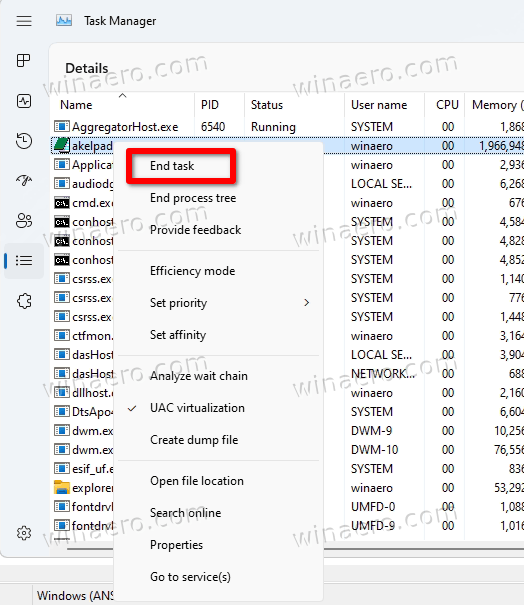
- Sometimes you need to repeat the step 3 multiple times before Windows will be able to kill the frozen software.
If you have more than just one app that isn't responding, there is a special command that can gracefully close them and free up computer's resources. It is much faster than closing the apps individually.
Close all hung apps at once
- Right-click the Start button and select Windows Terminal.
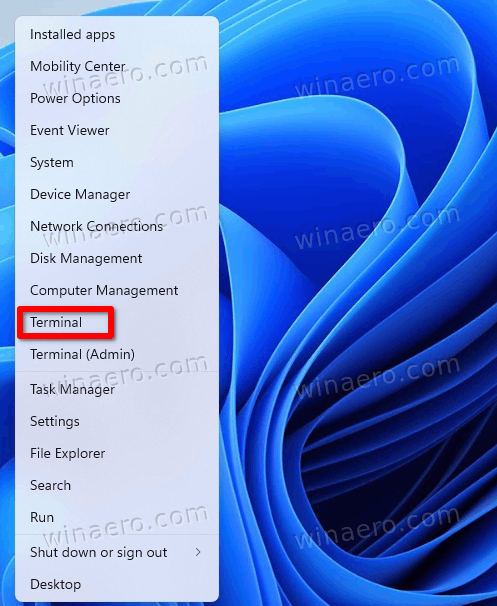
- In the PowerShell or Command Prompt tab, copy-paste the following command:
taskkill.exe /F /FI "status eq NOT RESPONDING".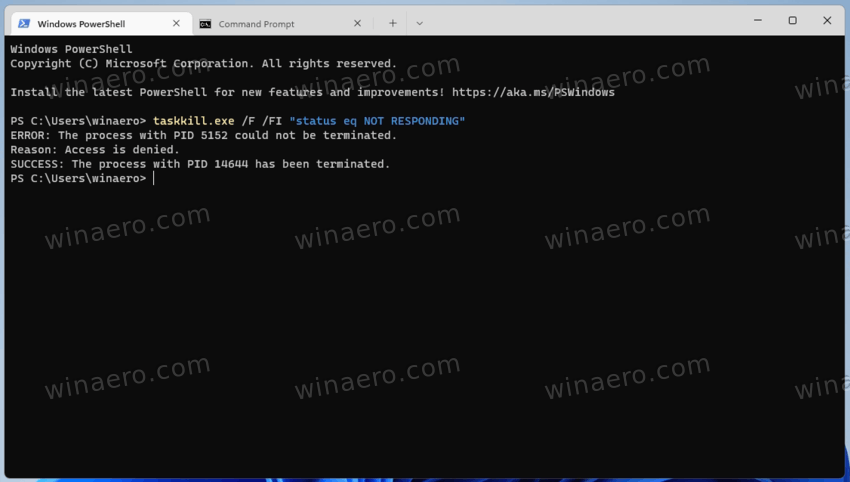
- Hit the Enter key, and you are done.
This method involves a built-in app, taskkill. Unlike the Task Manager, it is a console software, so you need to use it from the command prompt.
The app supports a variety of arguments, e.g. it can close a specific process by the executable name. For example, the taskkill /IM "notepad.exe" will close all instances of the Notepad app.
It supports the /F argument to force close the apps without waiting for app to respond on the request. This is what we used for frozen apps in the instruction above. E.g. taskkill /IM notepad.exe /F. You can learn more about its options and features by running it as follows: taskkill /?.
Keep in mind that sometimes a "busy" app may have the "not responding" state. This often happens when the app is waiting for a network resource which is suddenly disconnected. Or the app is reading a large file from the drive. The taskkill app will kill it anyway, as it doesn't differentiate hung apps by their resource usage.
Also, you can find a list of hung tasks by running the following command.
tasklist.exe /FI "status eq NOT RESPONDING"
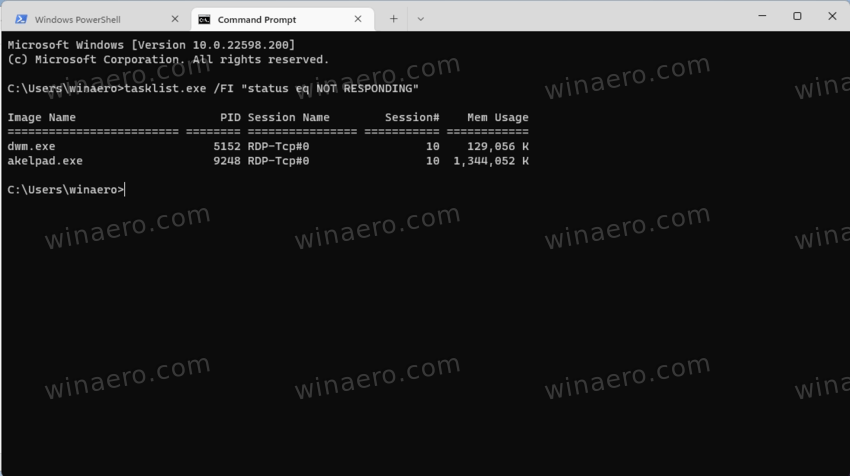
It will print the apps that are not responding. You can save it to a text file by copying the output from the terminal, or by redirecting the command to the file, like this: tasklist.exe /FI "status eq NOT RESPONDING" > frozen-apps.txt.
Create a shortcut to kill not responding apps
- Right-click anywhere on the desktop, and select New > Shortcut from the menu.
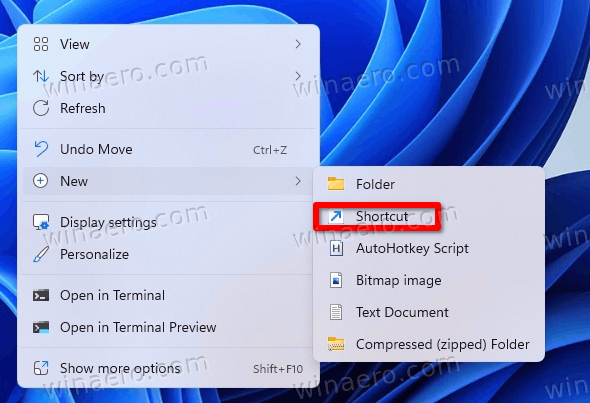
- In the Create Shortcut dialog, type or copy paste the
taskkill.exe /F /FI "status eq NOT RESPONDING"command, and click Next.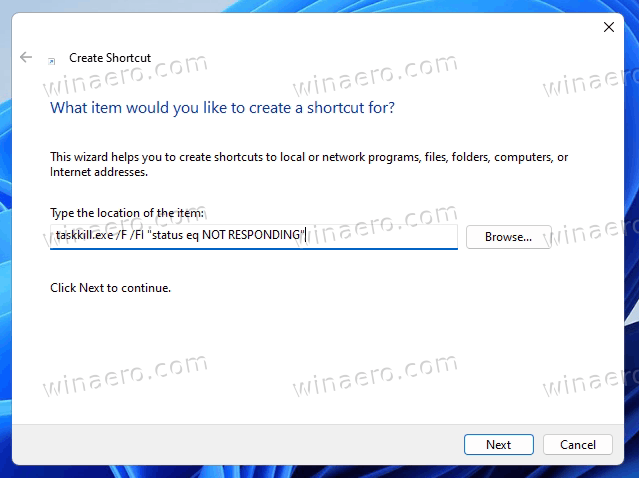
- On the next page, give your shortcut some meaningful name, e.g. "Close not responding apps", and click on Finish.
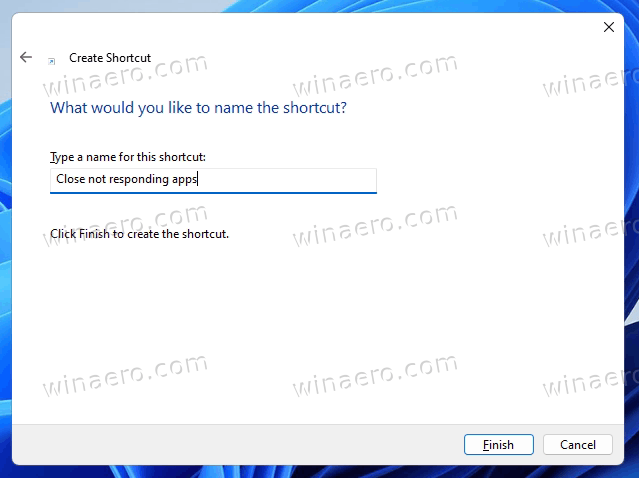
- Now, right-click the shortcut you just created and select Properties.
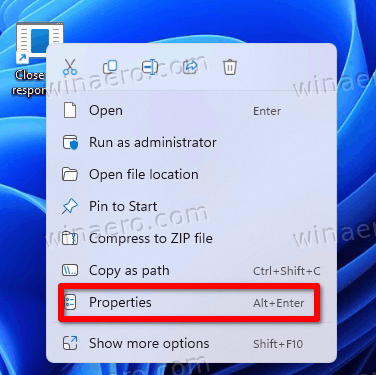
- Change its icon in the General tab to one from the c:\windows\system32\shell32.dll file that suits the shortcut action.
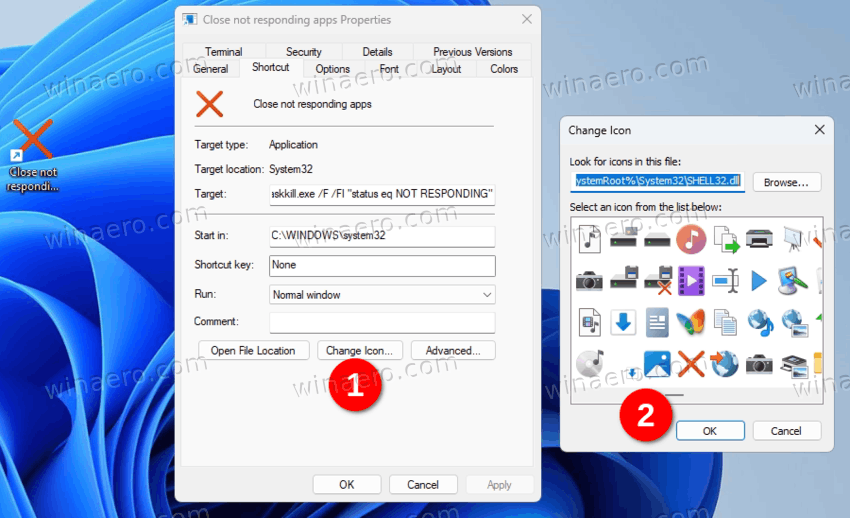
You are done! Now, you can right-click your shortcut and pin it to Start or taskbar. Now you can close hung tasks with one click.
The two reviewed ways are not only methods to close frozen apps in Windows 11. There are a couple of simple tricks that may help you to get rid of such an app.
Other methods to close a hanging app
- If the app window has the close button visible, try to click it one or several times. Windows may show a dialog that will allow you to force close the app.
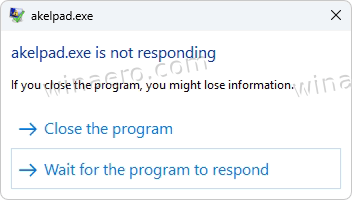
- You can achieve the same effect by pressing Alt + F4 one or several times in the frozen app window. This keyboard shortcut closes the active window, so it may bring the same dialog.
- A PowerShell cmdlet
Stop-Process -Name "app"will try to terminate the app. It it is not effective, try adding the-Forceargument. For example,Stop-Process -Name "notepad" -Forceto close Notepad forcibly. Check out docs here.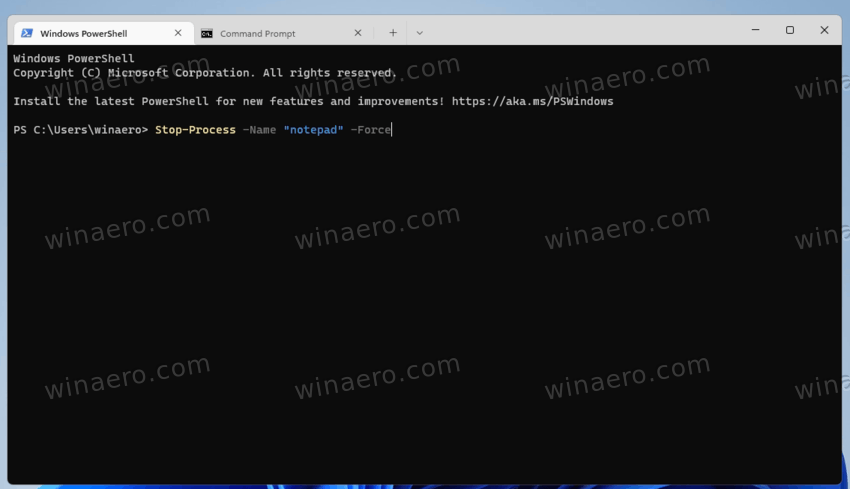
Sure, there are also third-party tools and extra software that can help you with closing any of the running processes. To name a few, Process Killer or Sysinternals Process Explorer are good additions. But the use of third-party apps may be prohibited at your workplace by enterprise policies.
Finally, some of the full screen games may prevent you from accessing or opening the Task Manager. In this case, you can always go with the Ctrl + Alt + Del keyboard sequence and try to open the Task Manager from there, or sign out from your user account as a last resort.
Support us
Winaero greatly relies on your support. You can help the site keep bringing you interesting and useful content and software by using these options:
